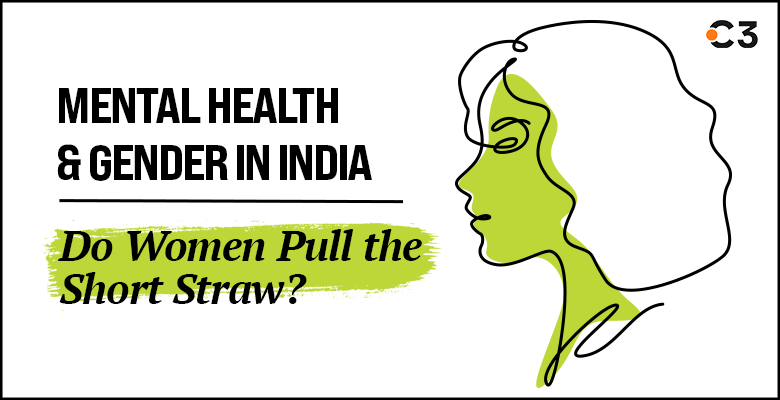We equip, mobilize, educate, and empower women
How do you create compelling presentations that wow your colleagues and impress your managers? Here’s how to get started.

The differences women and men experience due to socially constructed gender roles infiltrate all areas of life: household roles, responsibility and agency, power and social status. Inevitably, this also leads to women and men to have different patterns of access to mental health support. Globally, girls and women are more likely to suffer from anxiety and depression. Studies show that the same pattern persists in India too.
Why are girls and women more prone to depression and anxiety?
A study based in India published in the International Journal of Epidemiology highlights three key factors: socio-economic factors, marital and gender disadvantage factors and physical and reproductive health factors. Under these umbrellas, the study looked at indicators like age, education, violence, age of marriage, number of children, and substance abuse amongst others. Of these, the strongest correlation was made between sexual and physical abuse and the prevalence of depression and anxiety. It has been well documented that girls that face abuse turn out to be women suffering from mental illness. The National Family Health Survey of 2019-2021 showed that an overall 30% of women in India face gender based violence – putting a third of all women in India at higher risk of developing anxiety disorders and depression. Further, the treatment of adolescent girls as “women in waiting” both adds household responsibilities, reduces access to education and safe spaces outside home, limits mobility, conditioning them into honed caregivers, often at the cost of their own physical and mental well-being.
Why don’t women seek professional mental health help?
There are two key reasons: the infrastructure for mental health care in India is poor and the stigma associated with mental health issues. India has 0.7 physicians per 1000 people and only 1 psychiatrist for every 343,000 people. It is likely that this number is even lower for women in India. Considering girls and women in India have limited access to physical mobility, financial independence, privacy, and internet and digital devices, access to mental healthcare remains a dream for many. Further, the stigma women face is life-altering: the National Commission for Women found that families willingly abandoned mentally ill women. These circumstances were made worse during the COVID 19 pandemic where adolescents reported higher isolation, decreased access to psychiatric support, increased rates of domestic violence, increased household chores and disruption of education - reducing the already limited access to mental healthcare.
Can we do something to change this?
Needless to say, the entire country suffers from the lack of infrastructure for mental health care with the position of women exacerbating an already prevailing issue. Currently, community-based mental health interventions for women are showing progress. These programmes often include group counselling and stress management and women have reported reduced stress and increased levels of relaxation. Initiatives like these show promise that simply creating safe communities for women could save lives. Centre for Catalyzing Change (C3) has been working with young people across Bihar, Chhattisgarh, Jharkhand and Odisha, building a cadre of peer leaders and peer support groups under the Rashtriya Kishore Swasthya Karyakram (RKSK). These trained and informed peer leaders are enabling safe spaces for adolescents, especially girls, to share, listen and exchange proper information on various issues affecting their lives, with a key focus on their mental health and well-being. This initiative can be further strengthened by equipping these peer leaders with proper training on mental health, group counselling and peer support.